The following shows how to do it Step 1 First we multiply both sides by d x dx dx to obtain d y = f ( x) d x dy=f (x)~dx dy = f (x) dx Step 2 Then we take the integral of both sides to obtain That's why they can ask you to find an expression for dy/dx Then saying f(x,y)=0 means f is zero along the curve defined by y(x) #9 unscientific 1,734 13 Dick said You think of y as being some function of x That's why they can ask you to find an expression for dy/dx Then saying f(x,y)=0 means f is zero along the curveKCET If 2x2y = 2xy, then (dy/dx) is (A) 2yx (B) 2yx 2xy (D) (2y1/2x1) Check Answer and Solution for above Mathematics question Tardigrade

If Sqrt Y X Sqrt Y X C Then Find Dy Dx
What is the derivative of y/x
What is the derivative of y/x-4) We want to find dy/dx, which is on the LHS To get this dy/dx on its own we can multiply both sides by y So we get dy/dx = y log(2) 5) To finish this question we need to sub in for y and then we have an answer for dy/dx Recall y=2^x (from our original question) So we get dy/dx = (2^x)(log(2)) => our final solutionIf Y 1 X 1 X2 1 X4 1 X 2n Then The Value Of Dy Dx At X 0 Is If Y 3x 1 3x 1 Sin X Loge 1 X X 1 Then At X 0 Dy Dx Is Equal To If Y Cos 2 X Sec 2 X Then If Y Eq X X2 Plus X3 X4 Then The Value Of X Will Be If y is a function of x and log(x y) = 2xy, then the value of y'(0) is If y sec x tan x x 2 y = 0, then dy/dx =




Derivatives As Dy Dx
Suppose a dependent variable y represents a function f of an independent variable x, that is, = () Then the derivative of the function f, in Leibniz's notation for differentiation, can be written as (())The Leibniz expression, also, at times, written dy/dx, is one of several notations used for derivatives and derived functionsA common alternative is Lagrange's notation Find dy/dx (x) 1/2 (y) 1/2 = (a) 1/2 Mention each and every step If y = tan 1 a/x log (xa/xa) 1/2 , prove that dy/dx = 2a 3 /(x 4 – a 4 ) Mention each and every step Queries asked on Sunday & after 7pm from Monday to Saturday will be answered after 12pm the next working dayFind Dy/Dx,If E X E Y = E X − Y Maharashtra State Board HSC Commerce 12th Board Exam Question Papers 195 Textbook Solutions Online Tests 99 Find `dy/dx,if e^xe^y=e^(xy)` Advertisement Remove all ads Solution Show Solution `e^x e^y = e^(x – y)` diff wrt x
I'm not absolutely sure on how I can deal with this problem with this problem Find $ \dfrac{dy}{dx} $ if $ y = 2u^2 3u $ and $ u = 4x 1 $ I am trying to use the chain rule on it $$ \dfraGet an answer for 'If tan(xy)=x, then determine dy/dx' and find homework help for other Math questions at eNotesStack Exchange network consists of 177 Q&A communities including Stack Overflow, the largest, most trusted online community for developers to learn, share their knowledge, and build their careers Visit Stack Exchange
then we get , 2/x 3/y(dy/dx)= 5/xy (1dy/dx) take the terms related to dy/dx to one side then the equation is written as, 2/x5/xy =(dy/dx)(5/xy 3/y) upon solving we get dy/dx as y/x New questions in Math Enter cqhk girls join for funTill infinite Find dy/dx Please give the solutionWrite in the form y=x^y since x^x^x^x is till infinite, we can consider it to be y, then take l Book a Trial With Our Experts ×Find the slope of the tangent line to the graph of the equation xy x = 1 at that point on the graph whose first coordinate is 1 (that is, corresponding to x = 1) Solution We must find dy/dx at x = 1 Assume y is a function of x, y = y(x) The relation now is xy(x)




If 2 X 2 Y 2 X Y Then Dydx Is Equal To



If Y X Is A Solution Of 2 Sinx 1 Y Dy Dx Cosx And Y 0 1 Then Find The Value Of Y P 2 Studyrankersonline
Get an answer for 'If x y = xy, then dy/dx = Please explain step by step' and find homework help for other Math questions at eNotes The equation y = xc tells you nothing because c can take any value It is literally as useful as saying 0 = 0 It doesn't make any sense to manipulate dy/dx = y/x in the first place if you understand what that equation actually means, and this tutorial does not explain that to the reader If y = (sin x) x sin1 (x) 1/2, find dy/dx Mention each and every step find dy/dx y = (log x) x (x) log x mention each and every formula and minute details find dy/dx mention each and every formula and minute steps and detail Y = x x e (2x 5) Differentiate x sinx w r to x




7 8 Differential Equations Variables Separable




How To Find The Value A Y Z B X Z Mathematics Stack Exchange
Transcribed image text dy If x2 xy y3 = 0, then, in terms of x and y, dx a 2xy x3y2 b x3y2 2xy 2x C 13y2 d 2x x3y2 e 2xy x3y2–1 An equation of the line tangent to the graph of f(x) = x(1 – 2x)3 at the point (1,1) is a y = 7x 6 b y = 6x 5 C y = –2x 1 d y = 2x 3 e y = 7xIf xy (x y) = 2 , then find dy/dx Get the answers you need, now!Take log on both sides == x log y = logv == x*1/ydy/dx logy*1 (by products rule) = 1/v dv/dx == dv/dx = y x (x/y dy/dx logy) == u v = a b differentiating wrt x we get , du/dx dv/dx = 0 ==




Ex 9 4 14 Find Particular Solution Dy Dx Y Tan X Y 1
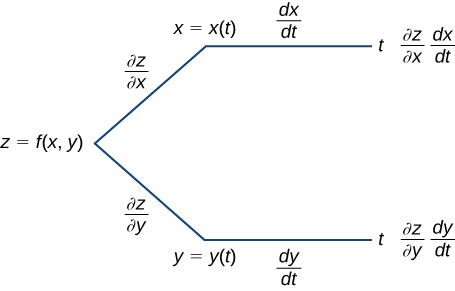



14 5 The Chain Rule For Multivariable Functions Mathematics Libretexts
if $\displaystyle \sin{\left(xy\right)}=xy$, then $\displaystyle\frac{dy}{dx}=$ know this is implicit differentiation and that $\displaystyle\frac{dy}{dx}$ of $\displaystyle\sin(xy)$ is $\displaystyle y\cos{(xy)}$ but how is this done with $= x y$On the left, it is regular derivatives, but on the right we need to the product rule we get (i) step 1 subtract 1 (dy/dx) from both sides and then subtract y from both sides to get (ii) step 2 factor out the dy/dx to get (iii) step 3 divide by x1 to get (iv)Take log on both sides == y log x = log u == y*1/x logx * dy/dx (by products rule) = 1/u du / dx ==du/dx = x y (y/x logx dy/dx) let y x = v ;




Problem Set 10 Solution Random Variations Stochastic Systems Studocu




Find D 2y Dx 2 In Terms Of X And Y X 2 Y 2 5 Chegg Com
Follow Report by Himeshjha Log in to add a comment Answers rishu6845Calculus (8th Edition) Edit edition Solutions for Chapter 35 Problem 10E Find dy/dx by implicit differentiationxey = x – y Solutions for problems in chapter 35 1ESolve your math problems using our free math solver with stepbystep solutions Our math solver supports basic math, prealgebra, algebra, trigonometry, calculus and more
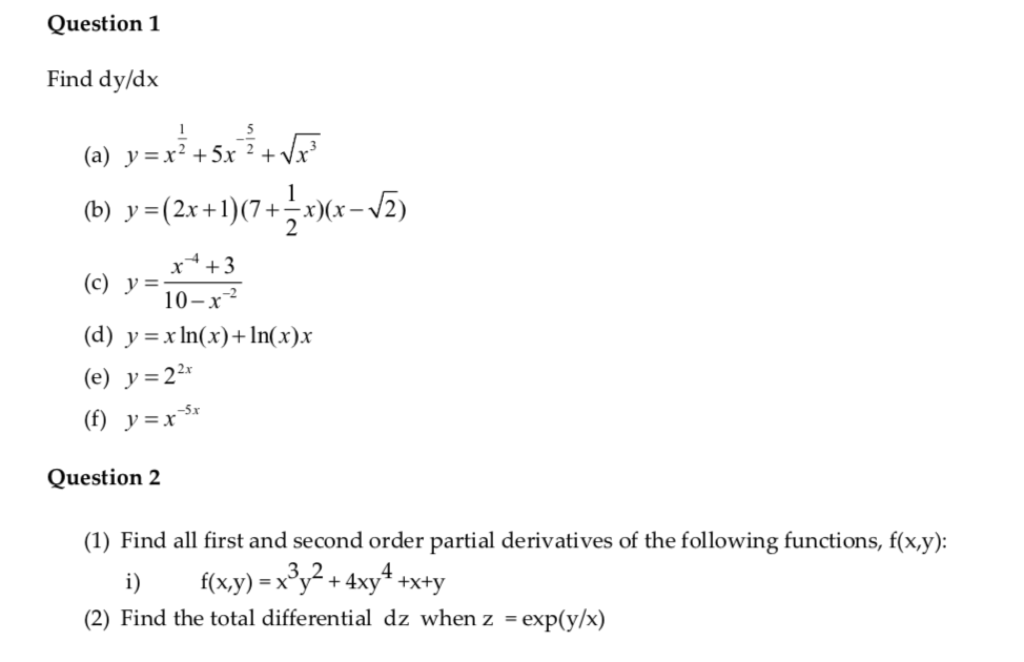



Question 1 Find Dy Dx A Y X 3x Ver B Chegg Com



Rules Of Calculus Functions Of One Variable
Consider the relation defined by the equation tan y= xy for x in the open interval 2piFunction", then dy is the "rise" and dx is the "run" Another way of looking at it is as follows • dy = the change in y • dx = the change in x • f0(x) = how the change in x causes a change in y Example 10 For each f(x,y)=0, find dy/dx for each of the following 1 x y y x = a b, here ab is const let x y = u ;



2



If Xy E X Y Then Prove That Dy Dx Log X 1 Log X 2 Sarthaks Econnect Largest Online Education Community
Click here👆to get an answer to your question ️ If √(x y) √(y x) = c, then d^2x/dy^2 is equal to Join / Login > 12th > Maths > Continuity and Differentiability > Second Order DerivativesT tglass New member Joined Messages 6 #1 #3 xyxy=5 x dy/dx y 1 dy/dx = 0 Then you'll be ok T tglass New member Joined Messages 6 #5 Thanks again for all the help! Example 33 Find 𝑑𝑦/𝑑𝑥 , if 𝑦^𝑥𝑥^𝑦𝑥^𝑥=𝑎^𝑏 Let u = 𝑦𝑥, v = 𝑥𝑦 & w = 𝑥^𝑥 Now, 𝒖 𝒗 𝒘 = 𝒂^𝒃




7 8 Differential Equations Variables Separable



Chapter Ii
Click here👆to get an answer to your question ️ If y^x = x^y , then find dy/dx Join / Login > 12th > Maths > Continuity and Differentiability > Logarithmic Differentiation > If y^x = x^y , then find d maths If y x = x y, then find d x d yVisit to my Channel https//youtubecom/c/GRAVITYcoachingInstituteVisit to my Channel Playlist https//wwwyoutubecom/c/GRAVITYCOACHINGINSTITUTE/playlists x^2y^2=c dy/{dx}=x/y ydy=xdx by exploiting the notation (separation) int ydy=int xdx further exploiting the notation 1/2y^2=1/2x^2d y^2=x^22d x^2y^2=2d x^2y^2=c where c=2d Depending on whether c is positive, negative or zero you get a hyperbola open to the xaxis, open to the y=axis, or a pair of straight lines through the origin
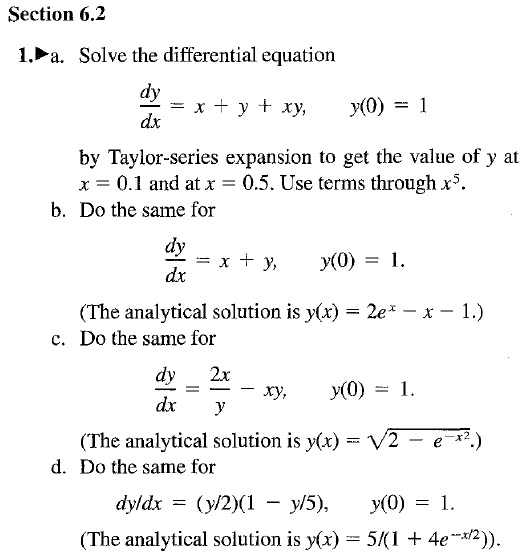



Solved 1 A Solve The Differential Equation Dy X Y Chegg Com



Www Tau Ac Il Levant Ode Solution 6 Pdf
37 Implicit Functions find dy/dx at xy x y = 5 Thread starter tglass;World of mathematics Something went wrong Wait a moment and try again1 Log in Join now 1 Log in Join now Ask your question Secondary School Math 5 points If xy (x y) = 2 , then find dy/dx Ask for details ;



Solved Homogeneous Equations 5 Verify That Each Of The Following Equations Is Homogeneous And Then Solve It A 2x X Yz Ans Y X 2x Inx Course Hero




If X Y Y X Then Find Dydx
The right hand side of the equation can be written as follows as per chain rule d y d x = d u d x × d d u u It is calculated about that d u d x = cos x d y d x = cos x × d d u u Now, find the derivative of square root of u with respect to u by the derivative of square root formulaThen the differential equation M(x,y)dxN(x,y)dy= 0 is exact for all x, y in R if and only if ∂M ∂y = ∂N ∂x (195) Proof We first prove that exactness implies the validity of Equation (195) If the differential equation is exact, then by definition there exists a potential function φ(x,y) such that φx = M and φy = NCalculus Find dy/dx y=xe^x y = xex y = x e x Differentiate both sides of the equation d dx (y) = d dx (xex) d d x ( y) = d d x ( x e x) The derivative of y y with respect to x x is y' y ′ y' y ′ Differentiate the right side of the equation Tap for more steps




If U Sin 1 X 2 Y 2 X Y Then Show That X Du Dx Y Du Dy Tan U Mathematics 1 Question Answer Collection




Differential Equation Derivative Nonlinear System
If x=at2 and y=at, then find dy/dx?Mathx^y=e^{xy}/math math\ln(x^y)=xy/math mathy\ln(x)=xy/math mathy(\ln(x)1)=x/math mathy=\dfrac{x}{\ln(x)1}/math math\dfrac{\mathrm dy If x^y = y^x, find dy/dx If y = log(x^2√(x^2 1)) then find dy/dx asked in Mathematics by Nakul01 (369k points) bseb model set;




Engineering Mathematics Notes




If Y Xsinx Then Youtube
If x y y x = a b, find dy/dx cbse; Ex 55, 15 Find 𝑑𝑦/𝑑𝑥 of the functions in, 𝑥𝑦= 𝑒^((𝑥 −𝑦))Given 𝑥𝑦= 𝑒^((𝑥 −𝑦)) Taking log both sides log (𝑥𝑦) = log 𝑒^((𝑥 −𝑦)) log (𝑥𝑦) = (𝑥 −𝑦) log 𝑒 log 𝑥log𝑦 = (𝑥 −𝑦) (1) log 𝑥log𝑦 = (𝑥 −𝑦)(As 𝑙𝑜𝑔(𝑎^𝑏 )=𝑏 𝑙𝑜𝑔𝑎)("As " 𝑙𝑜𝑔𝑒=1Welcome to Sarthaks eConnect A unique platform where students can interact with teachers/experts/students to get solutions to their queries
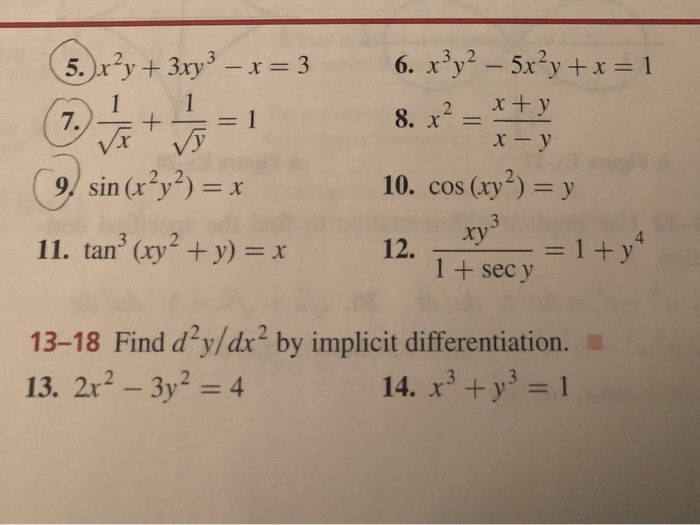



Exercise Set 3 1 Cas 2 A Find Dy Dx By Chegg Com




If X Y Y X 16 Then Dy Dx At 2 2 Is Maths Continuity And Differentiability Meritnation Com
In this differentiation problem, the variable y represents a function in x Hence, it can be differentiated with respect to x and do not think that y is a constant Therefore, the function y can be differentiated by the derivative rule of logarithms 1 y × d y d x = d d x Let t = xy and u = yx Then lnt = ln(xy) and lnu = ln(yx) It follows that 1 t = dy dx lnx → xy(lnx( dy dx) y x) Doing the same, we get that yx(lny x y ( dy dx)) Thus the derivative of the entire function is given by xylnx( dy dx) xy( y x) yxlny yx x y ( dy dx) = 0 xylnx( dy dx) yx x y ( dy dx) = −xy( y x) −yxlnyFind dy/dx by implicit differentiation xe^y = x y Boost your resume with certification as an expert in up to 15 unique STEM subjects this summer Signup now to start earning your free certificate




Find Dy Dx When X And Y Are Connected By The Relations X Y Y X 6 Brainly In




If Sqrt Y X Sqrt Y X C Then Find Dy Dx
If x yy x = 100, then dy/dx is equal to If Xi Greater Than 0 I Equal 1 2 3 N Then X1 Plus X2 Plus 1 By X1 Plus 1 By X2 Plus 1 By Is Equal To If Xy Tan 1 Xy Cot 1 Xy Then Dy Dx Is Equal To If y (t) is solution of (1 t) (dy / dt) ty = 1 and y (0) = 1, then y (1) = If y = (1 x 2) tan1 x x, then dy/dx =3 If x = secθ − cos θ, y = secnθ − cosnθ , then (x2 4)(dy dx)2 is equal to VITEEE 10 4 Let f(x) = x x and g(x) = sinx Statement1 gof is differentiable at x = 0 and its derivative is continuous at that point Statement2 gof is twice differentiable at x = 0 AIEEE 09However, by a well known theorem in calculus of functions of several variables, known as the Implicit Function Theorem, once an implicit function y=f(x) is given by an equation of the form F(x,y)=0, where F(x,y) is a given function with continuous partial derivatives with respect to both variables x and y, and its partial derivative with




Ma 104 Differential Equations




Example 33 Find Dy Dx If Y X X Y X X A B Teachoo
Answer to Find \\dfrac{dy}{dx} for x^2 y^2 = 2xy a \\dfrac{x}{1 y} b \\dfrac{y x}{y x} c \\dfrac{x}{y} d 1 By signing up, you'll getShare It On Facebook Twitter Email 1 Answer 1 vote answered by paayal (147k points) selected by Vikash Kumar Best answer Put x y = u and y x = v ∴ (i) becomes9 d d x x 9 d d x x Differentiate using the Power Rule which states that d d x x n d d x x n is n x n − 1 n x n 1 where n = 1 n = 1 9 ⋅ 1 9 ⋅ 1 Multiply 9 9 by 1 1 9 9 9 9 Reform the equation by setting the left side equal to the right side y' = 9 y ′ = 9 Replace y' y ′ with dy dx d y d x
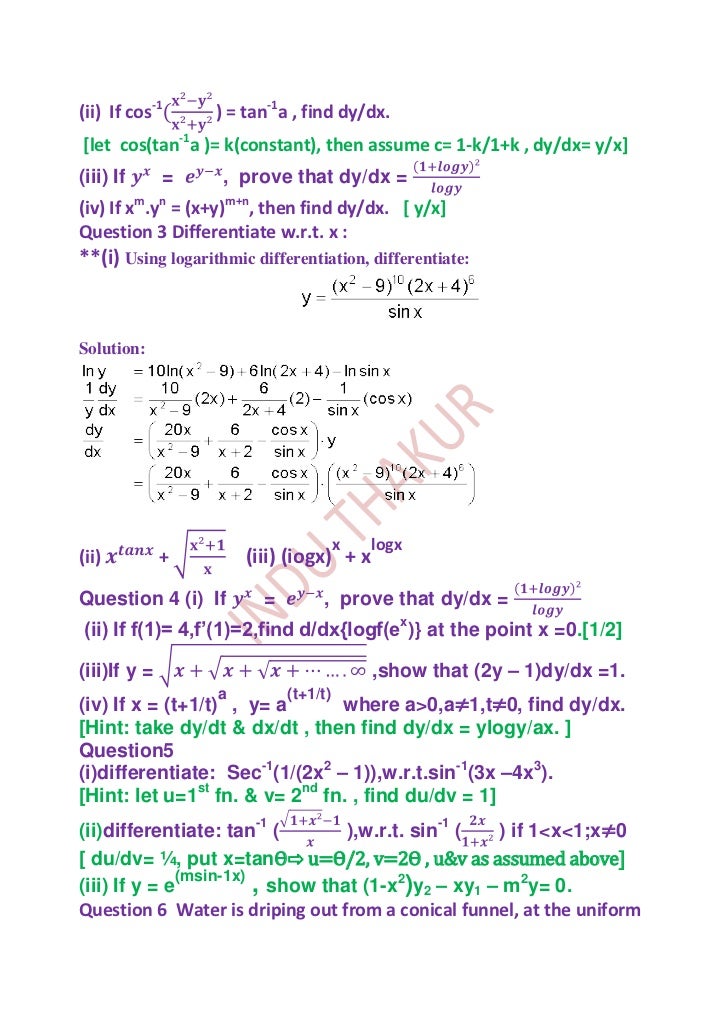



Application Of Derivatives




Find Dy Dx When Xy Yx C Maths Continuity And Differentiability Meritnation Com




Q6 If Xy C 2 Find Dy Dx Implicit Function Differentiation Calculus If Xy C2 Find Dy Dx Youtube



Solved Dy In Exercises 25 Through 32 Find The Rate Of Change Dx Where X Xo 25 Y 3 X0 2 27 Y 3x 5 X0 29 Y X 1 X X0 1 3 Course Hero




Y X Logx T H E N Dy Dx I S Y Xlogy Then Dy Dx Is




Find Dy Dx If Y X 5 E X 9 A Dy Dx 5x 6 E X 9 Chegg Com




Derivatives As Dy Dx



Secure Media Collegeboard Org Digitalservices Pdf Ap Apcentral Ap15 Calculus Ab Q4 Pdf



If X Y Y X What Is Dy Dx Quora




If Y X X Find Dy Dx For X 0



If X Y Y X What Is Dy Dx Quora



Http Www Stat Wisc Edu Ifischer Calculus Pdf



If X Y Y X A B Find Dy Dx Sarthaks Econnect Largest Online Education Community



Http Www Princeton Edu Mwatson Misc Switz W1 Ex Pdf




Math 432 Hw 2 5 Solutions Pdf Free Download




Examples Joint Pdfs Sol Studocu



Chain Rule




Ex 9 4 23 General Solution Of Dy Dx E X Y Is A E X E Y C




Ipe Material Notes
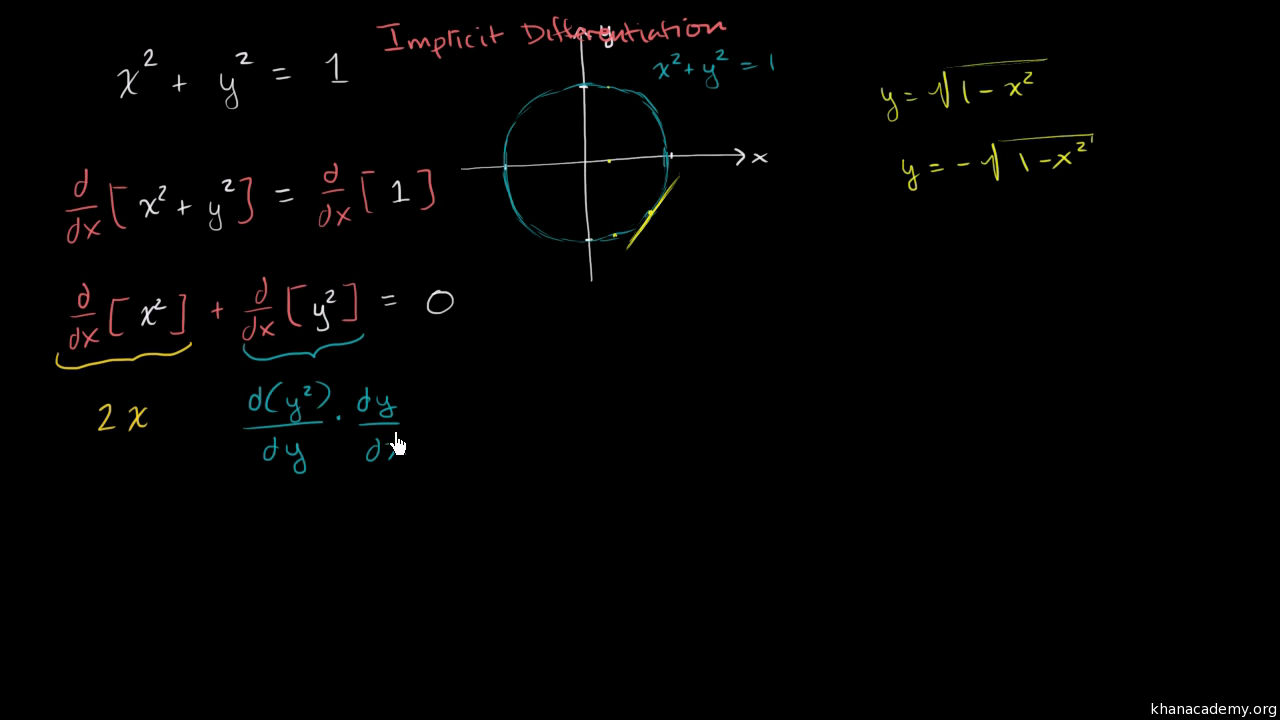



Implicit Differentiation Example Walkthrough Video Khan Academy




Engineering Mathematics Notes



2



2




Example 35 Find Dy Dx If X At2 Y 2at Class 12 Cbse



Double Integrals




If Y 1 A 2 X 2 Find Dy Dx Brainly In
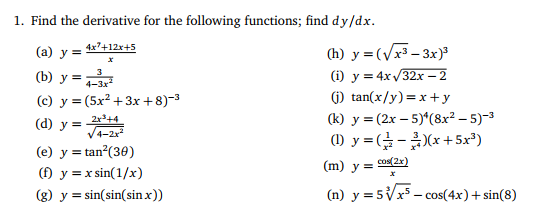



Find The Derivative For The Following Functions Find Chegg Com




Isoclines And Direction Fields Existence And Uniqueness Ppt Download
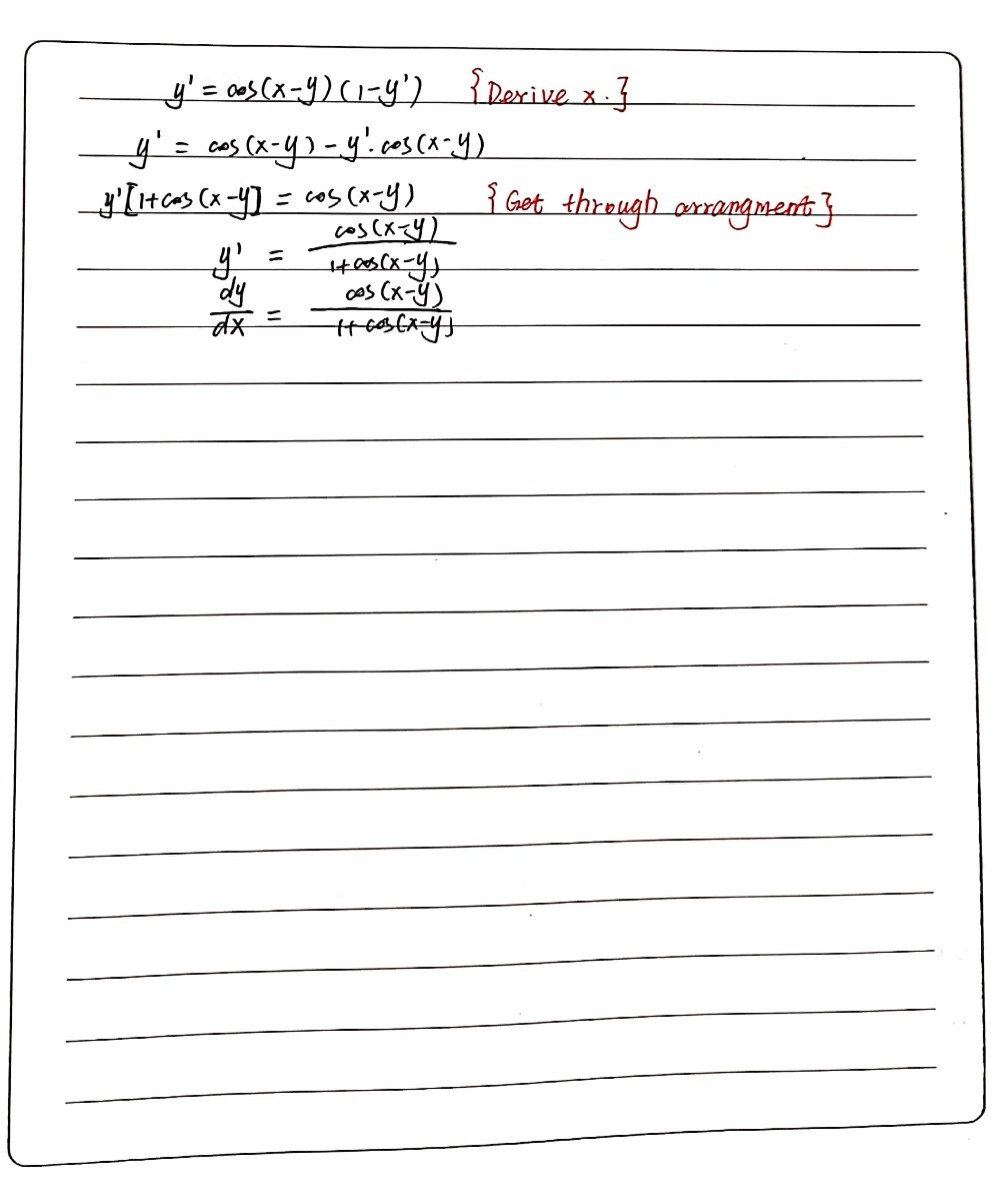



10 Find The Dy Dx By Implicit Differentiation O Gauthmath




If X 2 Xy Y 2 0 Then Find Dy Dx Brainly In
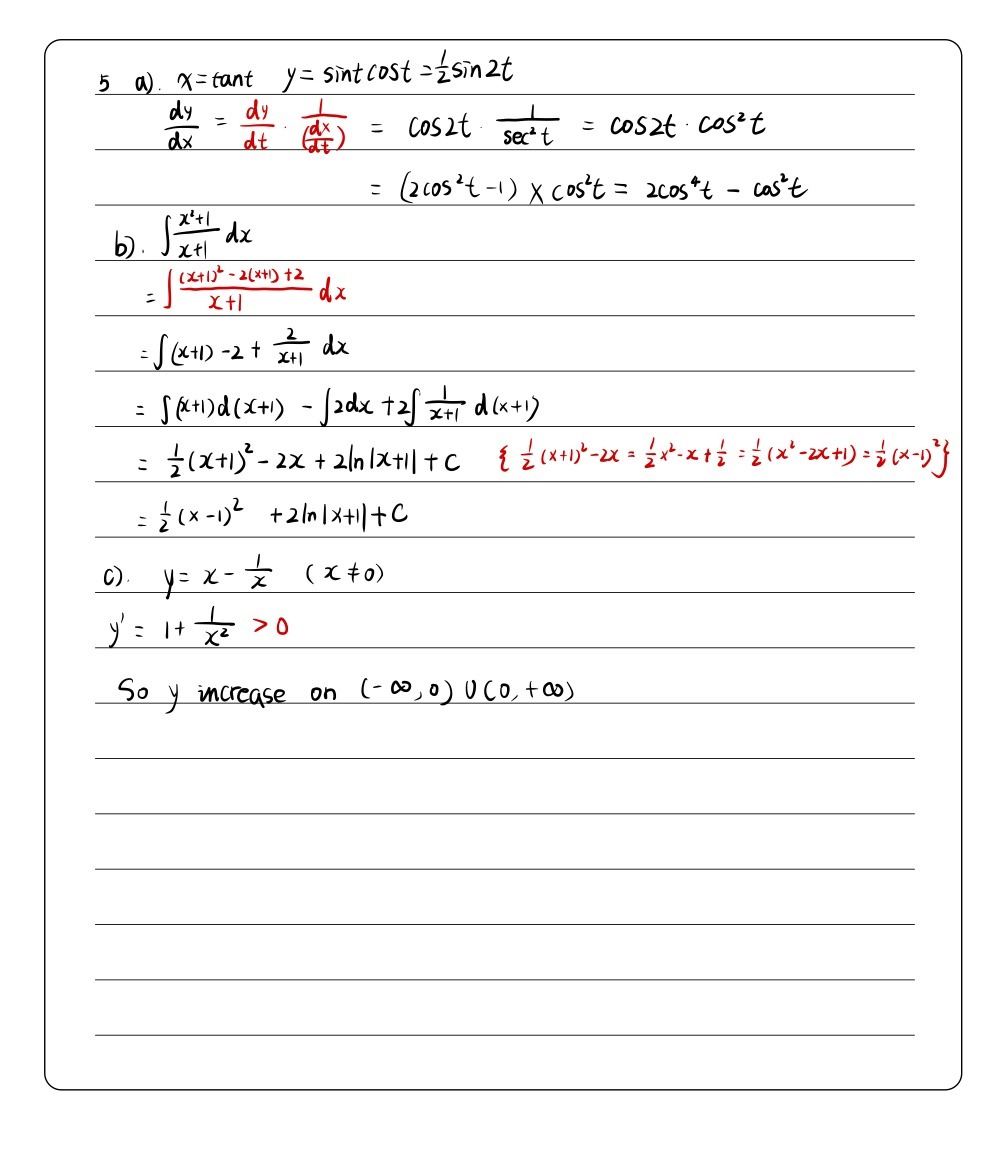



5 A Find Dy Dx When X Tan T And Y Sin T Co Gauthmath




If X 1 Y Y 1 X 0 Then Prove That 1 X 2 Dydx 1 0
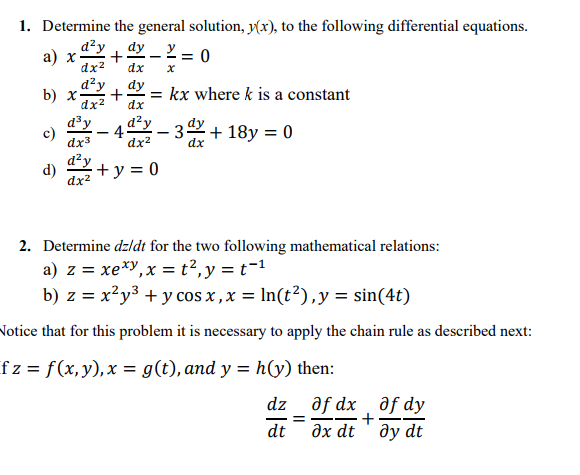



Determine The General Solution Y X To The Chegg Com



Help In Solving An Inexact Differential Equation Physics Forums



Http Math Fau Edu Long Sta4442s14soluquiz6 Pdf




If Y X X 5 Then Dx Dy Equals A 5 1 Y 2



Web Northeastern Edu Dummit Teaching Fa19 1341 1341 Midterm 1 Review Problems Pdf




3 Ways To Differentiate The Square Root Of X Wikihow



Http Www Math Ntu Edu Tw Cheng Teaching Calculus Ch15 Pdf




What Is The Derivative Of Xy How To Steps Video Lesson Transcript Study Com




Ex 5 5 15 Find Dy Dx Of Xy E X Y Class 12 Ex 5 5
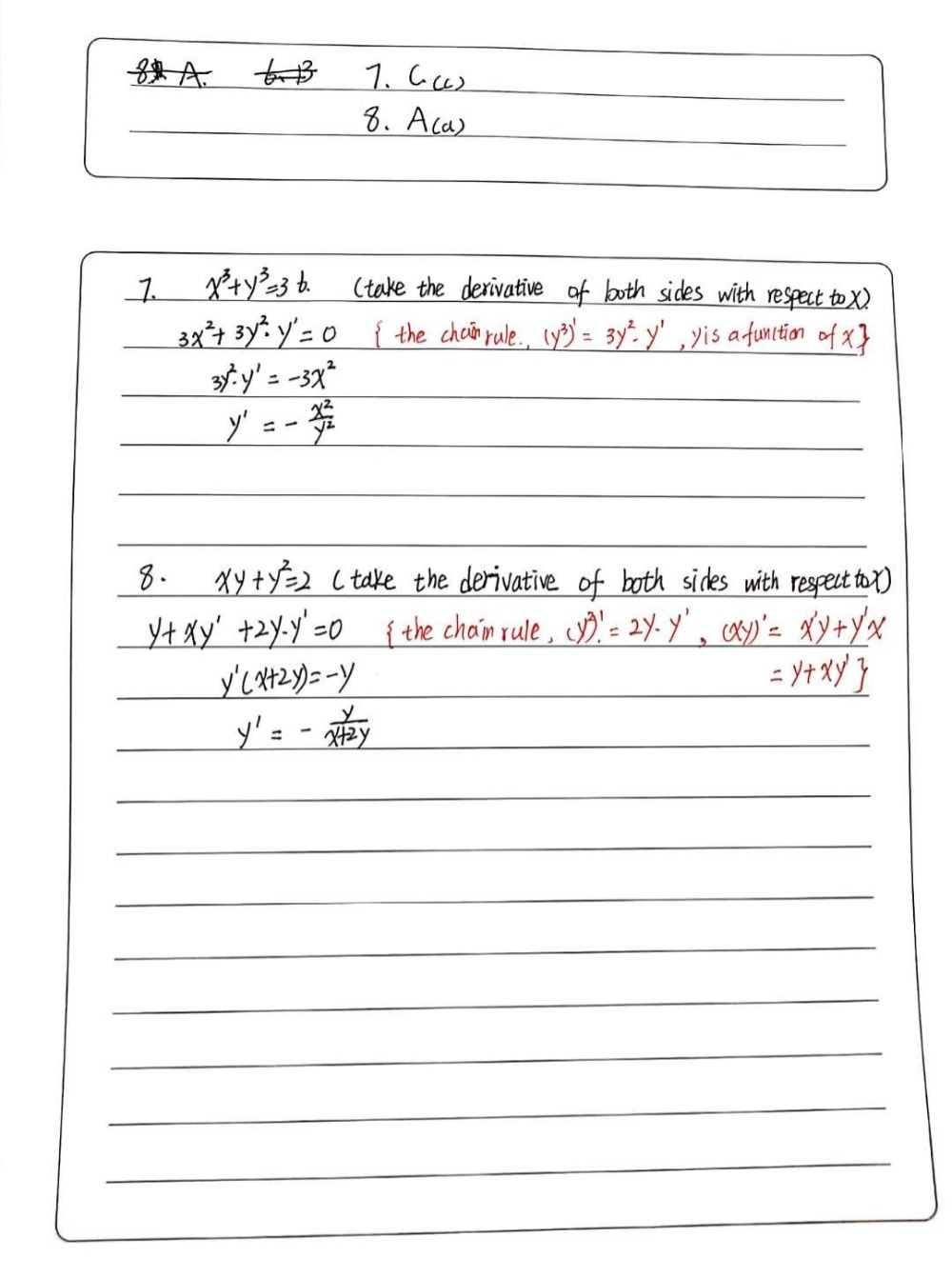



7 Find Dy Dx By Implicit Differentiation X3 Y3 Gauthmath



Www3 Nd Edu Taylor Math550 Images Oldexams Exam2a Pdf




Implicit Differentiation Example Walkthrough Video Khan Academy




Engineering Mathematics Notes




X Y Y X 16 Find Dydx Maths Questions
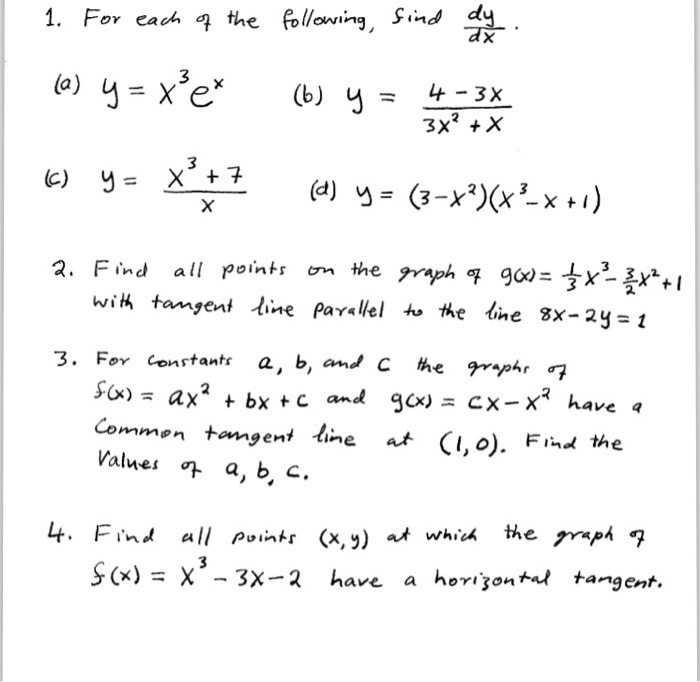



For Each Of The Following Find Dy Dx Y X 3 E X Chegg Com




Ex 5 5 12 Find Dy Dx Xy Yx 1 Class 12 Cbse Ncert



If X Y Y X What Is Dy Dx Quora
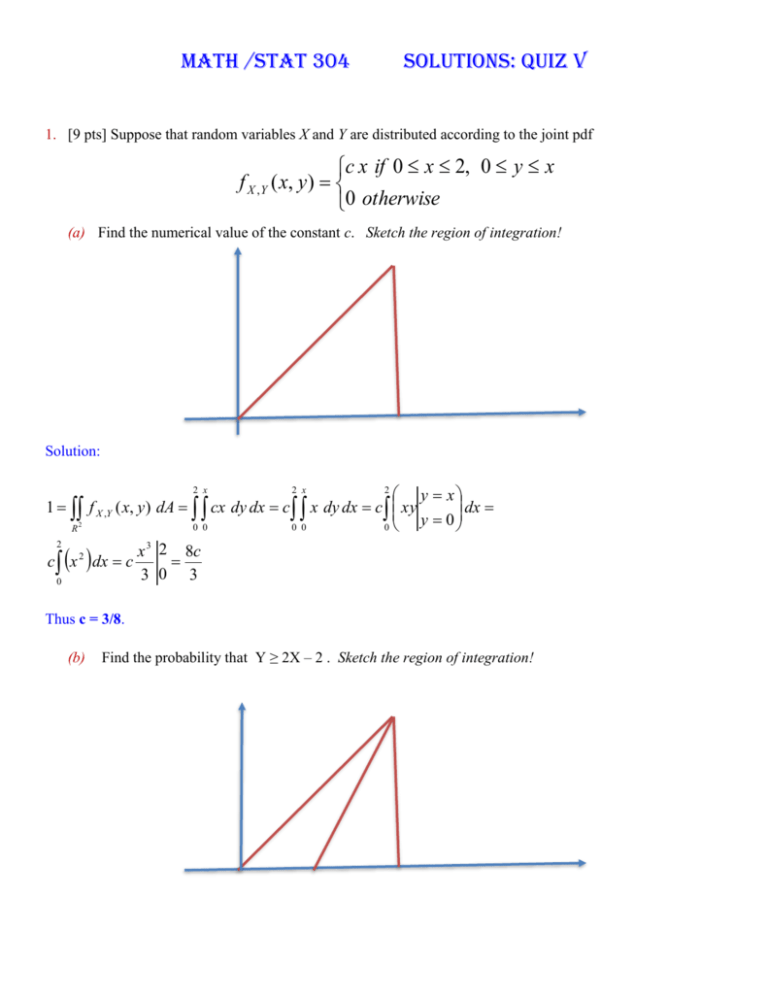



Math Stat 304 Solutions Quiz V
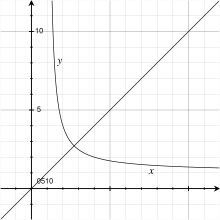



Equation Xy Yx Wikipedia



1




Math 432 Hw 2 5 Solutions Pdf Free Download




If X A Cos 3 Theta Y A Sin 3 Theta Then Sqrt 1 Dy Dx 2 Youtube



Www Amherst Edu System Files Multivariable 25review 25session 253 Pdf




Find The Solution Of Dy Dx Sin X Y Cos X Y Mathematics Topperlearning Com 116xvdjj




Derivatives As Dy Dx
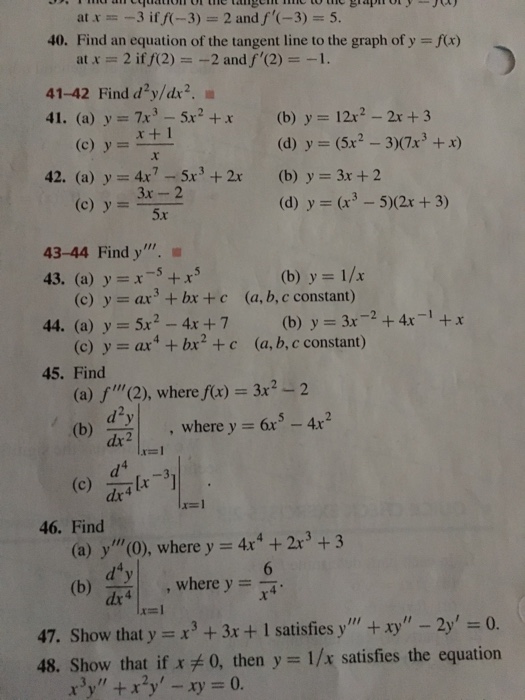



Find An Equation Of The Tangent Line To The Graph Of Chegg Com




Ex 5 3 5 Find Dy Dx In X2 Xy Y2 100 Class 12
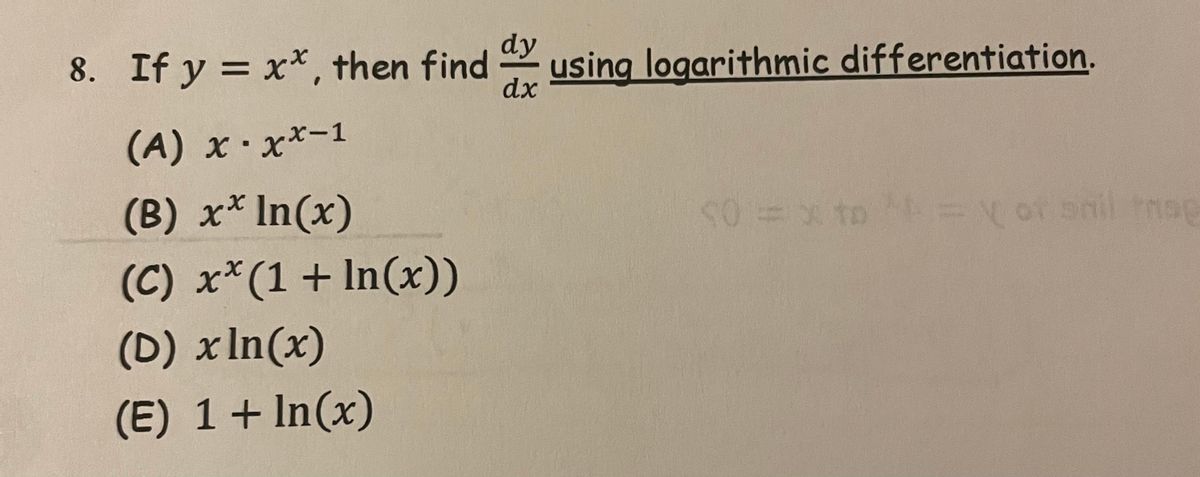



Answered Dy 8 If Y X Then Find Using Bartleby



Secure Media Collegeboard Org Digitalservices Pdf Ap Apcentral Ap15 Calculus Ab Q4 Pdf



Q Tbn And9gct76rwtg Vjx 0rpyfp1redrp2l5j5euljgxxay9f5hihtsuffx Usqp Cau



1




Homogeneous Differential Equations




Find Dy Dx For The Following I Y X 7 2 Ii



Http Www Stewartcalculus Com Data Essential calculus early transcendentals 2e Upfiles Topics 2ess At 07 Lde Stu Pdf



The Solution Of Dy Dx Y E X Y 0 0 Is Studyrankersonline



Http Edshare Soton Ac Uk Id Document 6174




If X Y Y X A B Then Find Dy Dx
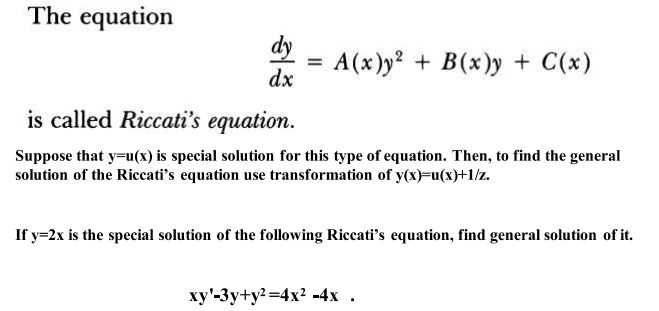



Answered Ne Equation Dy A X Y B X Y C X Dx Bartleby




If Y X Y X C Show That Dy Dx Y X Y X 1 Brainly In




Worked Example Euler S Method Differential Equations Video Khan Academy
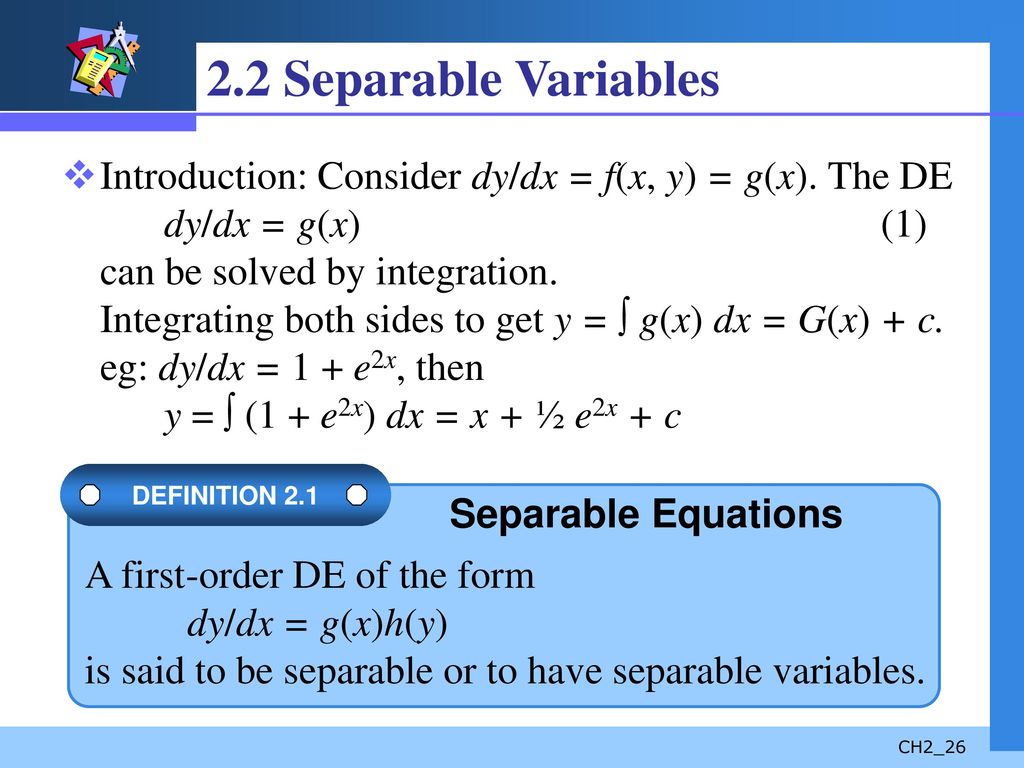



First Order Differential Equations Ppt Download



If X Y Y X What Is Dy Dx Quora



How To Differentiate W R T X Xy C 2 Quora




If Y 1 X X 2 2 X 3 3 X N N T H E N Dy Dx



0 件のコメント:
コメントを投稿